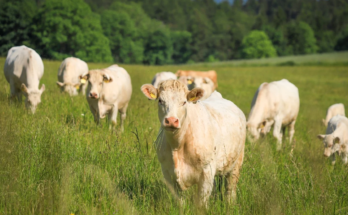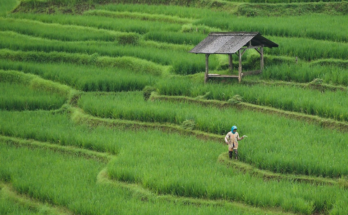Farming is a critical sector that not only provides food but also sustains the economy in many regions. However, it comes with inherent risks. Farm Liability Insurance is designed to protect farmers and agricultural businesses from potential legal liabilities that may arise during the course of their operations. This article will provide an in-depth exploration of Farm Liability Insurance, covering its importance, types of coverage, costs, and claims processes, ensuring you have all the information you need.
What is Farm Liability Insurance?
Farm Liability Insurance is a type of insurance that provides coverage for legal liabilities that farmers and agricultural businesses may face due to accidents, injuries, or damages that occur on their property or as a result of their operations. It helps protect the farmer’s assets by covering legal defense costs, settlements, and medical expenses that may arise from claims made against them.
Importance of Farm Liability Insurance
- Risk Mitigation: Farming involves numerous risks, including injuries to workers, visitors, and even livestock. Liability insurance helps mitigate these risks by providing financial protection against potential lawsuits.
- Asset Protection: Farmers invest significant resources into their operations. Liability insurance safeguards these investments by covering legal costs and potential settlements.
- Peace of Mind: Knowing that they have liability coverage allows farmers to focus on their operations without the constant worry of legal repercussions from accidents or injuries.
- Legal Requirement: In some regions, having liability insurance may be a legal requirement, particularly for farms that host visitors or offer agritourism activities.
Types of Farm Liability Insurance Coverage
Farm Liability Insurance can encompass various types of coverage, each tailored to specific needs:
- General Liability Insurance: This coverage protects against claims of bodily injury or property damage that occur on the farm. It covers incidents like slip-and-fall accidents, equipment-related injuries, or damages caused by livestock.
- Product Liability Insurance: If a farm sells products, such as crops or processed goods, product liability insurance protects against claims of injury or damage caused by those products. For instance, if a consumer becomes ill after consuming contaminated food, this insurance helps cover legal expenses.
- Pollution Liability Insurance: This coverage addresses claims related to pollution caused by farm operations, such as pesticide runoff or waste disposal issues. It protects against environmental damage claims and the associated cleanup costs.
- Professional Liability Insurance: For farmers offering advice or services (e.g., agronomy consulting), professional liability insurance protects against claims of negligence or inadequate services that result in financial losses for clients.
- Umbrella Liability Insurance: An umbrella policy provides additional liability coverage above and beyond the limits of standard liability policies. It offers an extra layer of protection for high-risk farms with significant assets.
Costs of Farm Liability Insurance
The cost of Farm Liability Insurance can vary widely based on several factors:
- Type of Coverage: The specific type of liability coverage selected will influence the overall premium. General liability coverage is typically less expensive than specialized policies like product or pollution liability.
- Farm Size and Operations: The size of the farm, the types of crops or livestock raised, and the overall scale of operations will impact insurance costs. Larger farms with more assets or higher risk profiles generally face higher premiums.
- Location: Geographic location plays a crucial role in determining insurance costs. Farms in areas prone to natural disasters, higher population densities, or legal claims may have higher premiums.
- Claims History: A farm’s past claims history can influence insurance costs. Farms with a history of frequent claims may face higher premiums, while those with a clean record may qualify for discounts.
- Deductibles: Farmers can choose their deductible amounts, which is the out-of-pocket expense they must pay before the insurance coverage kicks in. Higher deductibles usually result in lower premiums.
Average Cost Example
To provide a clearer picture, let’s consider an example of a small to medium-sized farm:
- Farm Size: 150 acres
- Types of Operations: Crop farming and livestock
- Coverage: General liability and product liability
- Estimated Annual Premium: $1,200 – $2,500
This range varies based on the factors mentioned earlier. For larger operations or farms with additional risks, costs can significantly increase.
The Claims Process in Farm Liability Insurance
If a liability claim arises, farmers need to follow a systematic process to file a claim:
- Notification: Promptly notify the insurance provider about the incident. Most policies require notification within a specific timeframe, often within 24 to 48 hours.
- Documentation: Collect and maintain thorough documentation related to the incident. This includes:
- Incident reports
- Witness statements
- Photographs of the scene
- Medical records (if applicable)
- Investigation: The insurance company will typically conduct an investigation to assess the claim. This may involve interviewing witnesses and reviewing documentation.
- Settlement: If the claim is approved, the insurance provider will issue a settlement based on the policy terms and the extent of the damages. Farmers should review the settlement offer carefully and ensure it aligns with their expectations.
- Appeals Process: If a farmer disagrees with the settlement offer, they can appeal the decision. This may involve providing additional documentation or engaging in discussions with the insurance company.
Factors Influencing the Need for Farm Liability Insurance
Several factors can influence the necessity of Farm Liability Insurance for a farming operation:
- Type of Farming Operation: Different types of farms (e.g., dairy, crop, livestock) have varying risks. Farmers should assess their specific operations and the associated liabilities.
- Visitor Engagement: Farms that host visitors for tours, events, or agritourism activities face additional liability risks and should consider broader coverage.
- Livestock and Equipment: Farms with large livestock populations or heavy machinery face unique risks. Adequate coverage protects against potential accidents or injuries related to these assets.
- Financial Situation: Farmers should evaluate their financial stability when determining insurance needs. Those with higher financial risks may benefit from more comprehensive liability coverage.
- Regulatory Requirements: Understanding local regulations regarding liability insurance is crucial, as some areas may mandate specific types of coverage.
Tips for Choosing the Right Farm Liability Insurance
- Assess Your Risks: Evaluate the specific risks associated with your farming operations. This assessment will help determine the necessary coverage types.
- Consult an Insurance Agent: Work with an insurance agent who specializes in agricultural insurance. They can provide valuable insights and help tailor coverage to your needs.
- Compare Policies: Shop around and compare policies from different insurers. Look at coverage options, limits, deductibles, and premiums to find the best fit for your operation.
- Review Policy Terms: Carefully review policy terms and conditions, including exclusions and limitations. Ensure you fully understand what is and isn’t covered.
- Consider Bundling: Many insurance providers offer discounts for bundling multiple policies. Consider combining farm liability insurance with other types of coverage for potential savings.
Farm Liability Insurance is an essential component of risk management for farmers and agricultural businesses. By providing financial protection against a wide range of legal liabilities, it safeguards the investments that farmers make in their operations. Understanding the various coverage options, costs, and claims processes associated with Farm Liability Insurance is vital for farmers to make informed decisions.
In an ever-changing agricultural landscape, having the right insurance coverage is crucial for protecting both livelihoods and assets. As farmers continue to face risks from various sources, prioritizing adequate liability coverage will ensure they can navigate challenges while focusing on what they do best—producing food and supporting their communities.




